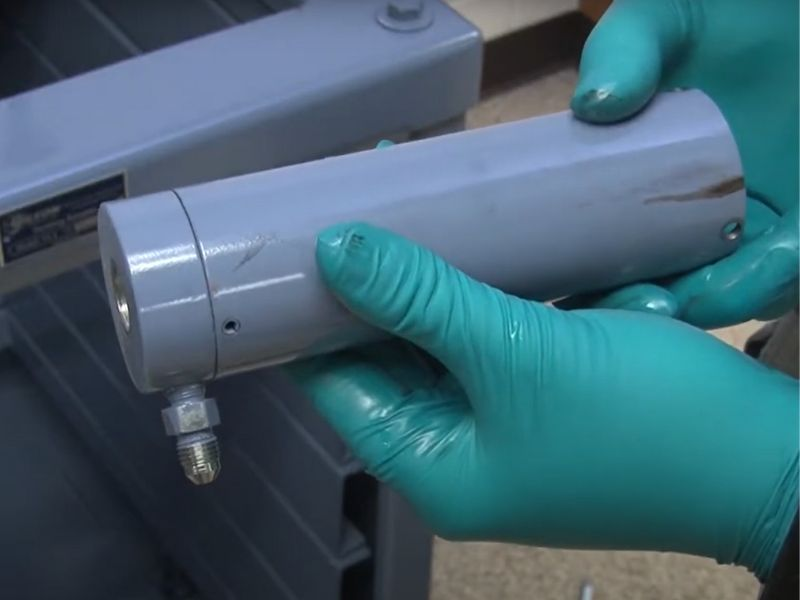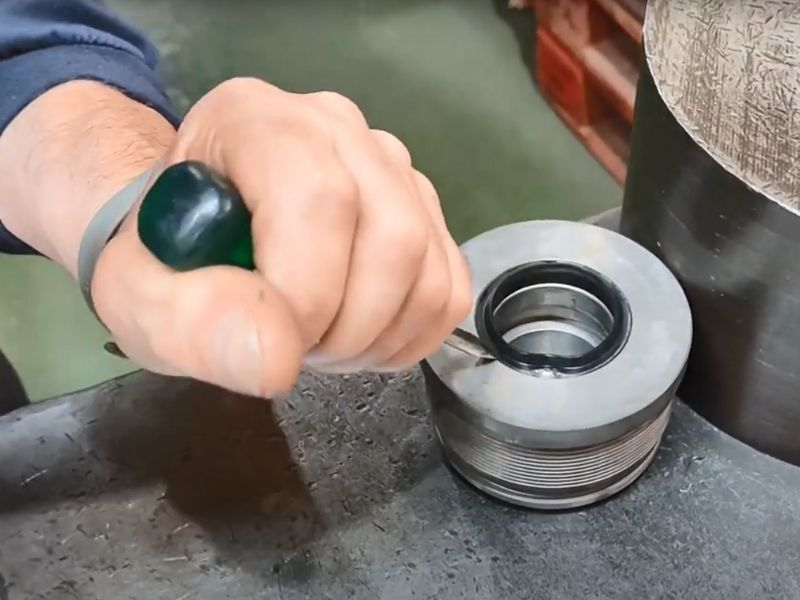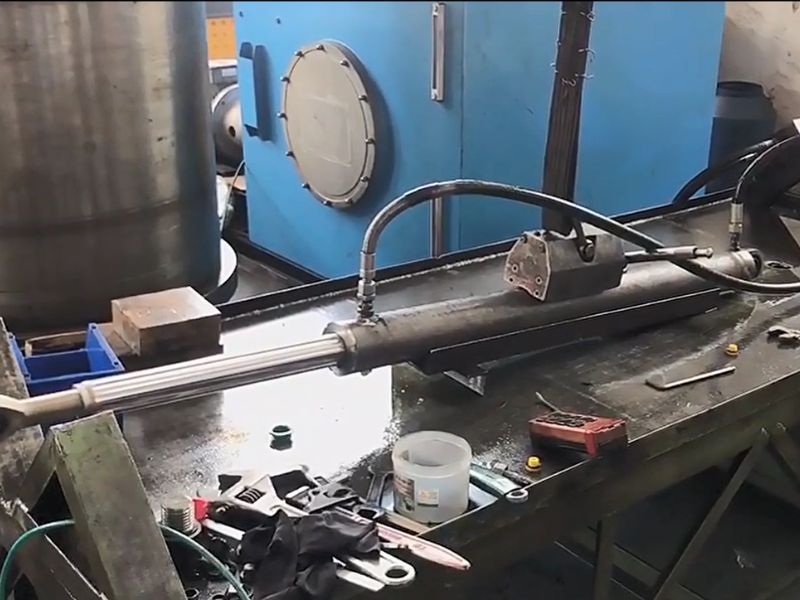Hydraulic cylinders can succumb to failure without appropriate upkeep. Consequently, it's of utmost importance to not merely address issues as they emerge, but also to foresee and forestall them during routine operations. This proactive approach is pivotal in ensuring that these fundamental machinery components consistently perform at their optimal capacity.
In this comprehensive article, we'll explore seven indispensable practices for the maintenance of hydraulic cylinders. Each step outlined constitutes a cornerstone in establishing a maintenance protocol that is designed not just to augment the lifespan of your equipment, but also to safeguard your investment.
Routine examination stands as the fundamental principle of preventive maintenance for hydraulic cylinders. Initiate a meticulous inspection by visually surveying the entire cylinder for indications of wear, corrosion, or harm. Allocate extra scrutiny to the piston rod and cylinder bore, given their heightened susceptibility to wear and corrosive effects. Look out for scratches, dents, or any asymmetrical wearing hints that might signify misalignments or contamination troubles. Furthermore, evaluate the seals meticulously for leakage traces or cracks. Employing precise measurement instruments to detect any dimensional alterations in cylinder elements, like rod straightness and bore circularity, is imperative. Ensure these checks occur with the system powered off and relieved of pressure to guarantee a secure inspection environment.
1.Regularly clean the exterior of the cylinder to prevent dirt accumulation.
2.Ensure that the hydraulic fluid is clean and free from contaminants. Use filters in the hydraulic system and replace them as per the manufacturer’s recommendations.
3.During maintenance, clean all parts with appropriate solvents and ensure they are dry before reassembly.
4.Protect the rod and cylinder from exposure to harmful substances and environments, using rod covers or wipers if necessary.

1.Visual Assessments: The initial and simplest measure is a visual check. Frequently inspect the hydraulic cylinder for any indications of fluid on or near the seals, joints, and under the cylinder body. Be vigilant for damp patches or trickles, which are indicative of leakage.
2.Pressure Examination Procedures: Implementing pressure tests constitutes a more intricate yet exceedingly efficacious means of identifying leaks. This process entails subjecting the system to pressure and monitoring for a decrease in pressure, suggestive of a leak's presence. Utilize pressure gauges to track the system's performance over the duration of these assessments.
3.Advanced Ultrasonic Leakage Identification: For enhanced detection capabilities, employing ultrasonic leak detectors is advisable. These instruments can discern high-frequency noises emitted by escaping fluids, proving especially useful in pinpointing minor or inconspicuous leaks.
1.Routine Seal Inspections: A predominant location for leaks in hydraulic cylinders resides at the seals. Consistent examination and replacement of deteriorated or impaired seals can forestall leak occurrences. It's imperative to opt for high-caliber seals that are tailored to the pressure and thermal dynamics of your system.
2.Investment in Superior Components: Allocate resources towards acquiring premium components for your hydraulic infrastructure. While top-quality materials and components may entail a heftier initial expense, they notably diminish the likelihood of leaks and system failures.
3.Accurate Installation and Alignment Procedures: Guarantee that all elements, chiefly the cylinder and pipework, are meticulously installed and properly aligned. Any misalignment can impose excessive strain on components, precipitating leaks.
1.Preparatory Measures: Prior to initiating work, verify that the system is relieved of pressure and thoroughly cleansed to avert contamination. Assemble the required tools, encompassing seal installation equipment, wrench sets, and lubricating agents.
2.Disassembling Process: Methodically dismantle the cylinder, attentively documenting the arrangement and sequence of all its components. Concurrently, take this opportunity to cleanse each individual part.
3.Extraction of Old Seals: Utilize suitable tools to delicately extract the aged seals, steering clear of sharp or metallic instruments that might induce scratches on the cylinder’s surfaces.
4.Emplacement of New Seals: Prior to fitting, apply lubricant to both the fresh seals and the cylinder’s surfaces. Employ seal installation devices to correctly position the seals without inflicting damage.
5.Reassembly: Subsequent to seal replacement and addressing any other exhausted components, reassemble the cylinder adhering to the inverse sequence of disassembly. Guarantee all components are precisely aligned and fastened in accordance with the manufacturer’s guidelines.

1.Regular Level Checks: Check fluid levels routinely, as low levels can lead to air ingress and cavitation, damaging the system. Ensure the system is cool and depressurized before checking.
2.Monitoring Quality: Look for signs of contamination like discoloration or unusual odors. Use oil analysis for a detailed assessment of fluid condition, checking for water contamination, particulate matter, and chemical breakdown.
3.Fluid Replacement: Replace the fluid if it shows signs of degradation or contamination. Follow the manufacturer’s guidelines for draining and refilling, ensuring the system is free from contaminants before refilling.
1.Proper Installation: Ensuring correct installation is the first step in preventing overload and misalignment. This includes aligning the cylinder correctly with its load and confirming that mounting points are secure and appropriate for the application.
2.Regular Checks: Conduct regular inspections to monitor for signs of misalignment or overload. This includes checking for uneven wear patterns, listening for unusual noises, and observing any changes in cylinder performance.
3.Use of Pressure Relief Valves: Installing pressure relief valves can prevent overload by releasing excess pressure and protecting the cylinder from damage.

1.Pressure Inspections: Consistently examining the hydraulic pressure within the system is vital. This is achieved through the use of pressure gauges to guarantee that the system functions within its designated pressure parameters. Any deviations may signal problems such as leaks, obstructions, or pump failures.
2.Efficiency Evaluations: Determine the hydraulic cylinder's efficiency by analyzing its reaction speed and the smoothness of its operation. Any inefficiencies could imply internal wear, contamination, or other concerns requiring attention.
3.Load Capacity Verification: At regular intervals, conducting load tests is advantageous. These assessments aid in confirming whether the hydraulic cylinder remains capable of managing its maximum intended loads without encountering performance issues.

1.Complex Systems: For hydraulic systems with high complexity or those integrated into critical operations, professional servicing ensures a level of expertise and precision that goes beyond routine maintenance. Experts can diagnose and address intricate issues that might be missed otherwise.
2.Heavy Usage: Systems under heavy or constant use are subject to accelerated wear and tear. Professional servicing can provide thorough, deep maintenance that extends the life of these systems and prevents costly downtime.
3.Upgrades and Overhauls: In cases where a system requires upgrading or a complete overhaul, professionals can offer solutions that are efficient, effective, and aligned with the latest industry standards.
Adhering to these procedures ensures that your hydraulic systems function at optimal performance, thereby reducing downtime and prolonging the lifespan of your equipment. Routine maintenance not only averts expensive repairs and replacements but also bolsters safety and reliability in your operations. Bear in mind, every hydraulic system has its distinct requirements; hence, customizing these measures to suit your particular needs will yield optimal outcomes.